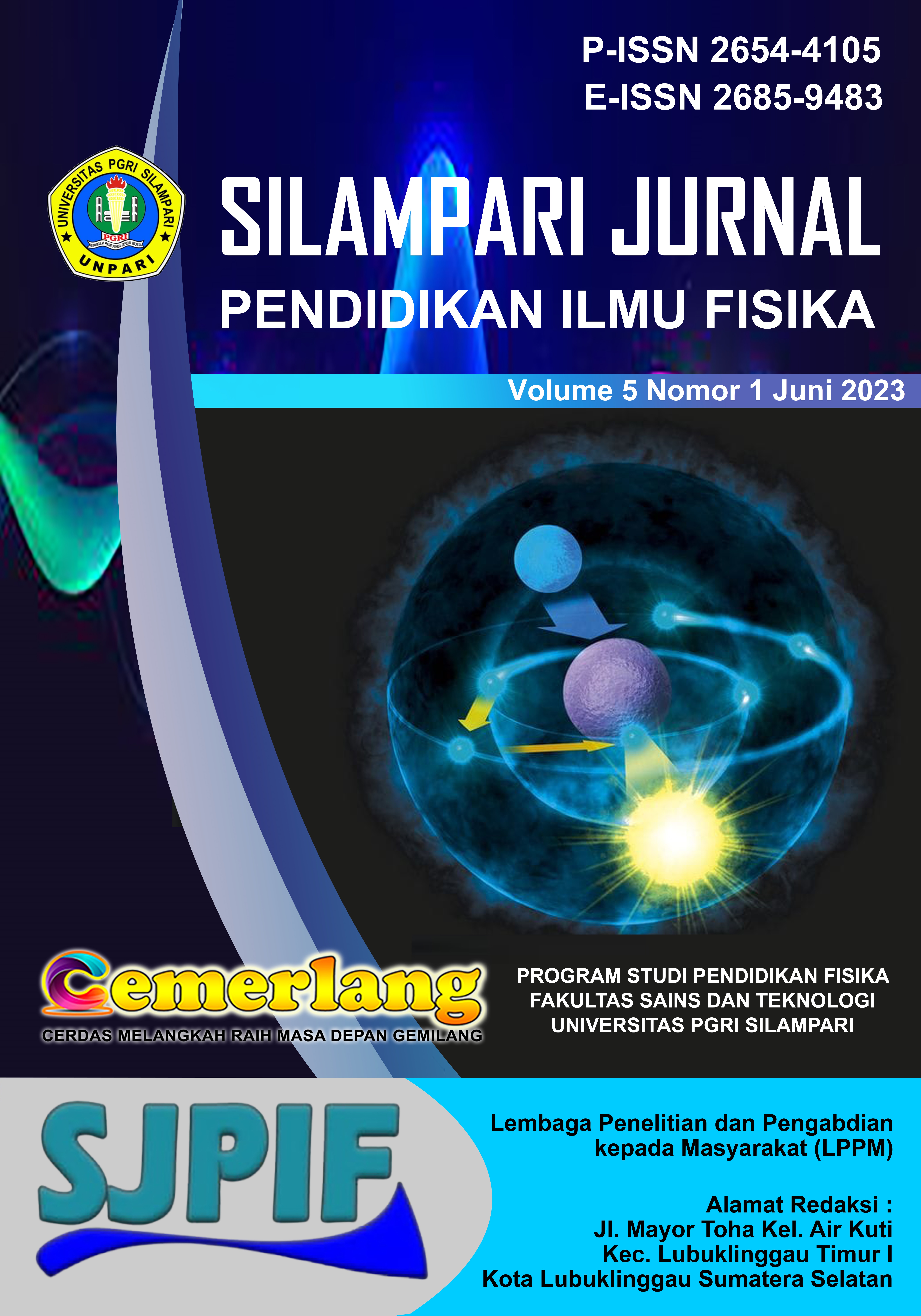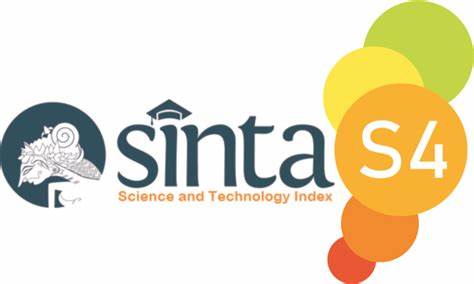Pemanfaatan Tangki Riak Untuk Mengukur Kecepatan Rambat Gelombang Permukaan Air
Abstract
The study intends to investigate the relationship between wavelength and frequency to calculate the speed of propagating waves on the water's surface. The researchers used a ripple tank to collect data by recording the pendulum's movement as well as the image of the ripples on the water's surface. The data is then analyzed with the Tracker application. The wavelength is determined by analyzing the recorded ripple shadows with the Tracker application. The Tracker application is used to analyze the recorded pendulum movement to obtain data on the period of vibration and calculate the frequency of the vibrations. The average surface wave velocity at a pendulum length of 10 cm is 3.38 10-2 m/s. In addition, for a 30 cm pendulum length, an average surface wave speed of 3.26 10-2 m/s is obtained.
References
Ikhsan, M. (2020) Peningkatan kemampuan Ketrampilan Proses Sains Melalui Praktikum Sederhana di SDN 004 Filial Kutai Kertanegara. Jurnal Masyarakat Mandiri. 4(2), 225-233.
Lepiyanto, A. (2014). Analisis Ketrampilan Proses Sains Pada Pembelajaran Berbasis Praktikum. Bioedukasi, 5(2), 156-161.
Lesmono, A.D., Wahyuni, S., dan Fitriya, S. (2012). Pengembangan Petunjuk Praktikum, Fisika Berbasis Laboratorium Virtual (Virtual Laboratory) Pada Pembelajaran Fisika di SMP/MTs. Jurnal Pembelajaran Fisika, 1(3), 272-277.
Muthmainah. (2015). Studi Model Pemecah Gelombang Menggunakan Ripple Tank. Fakultas Sains dan Teknologi, UIN Alauddin, Makassar.
Putri, R. (2019). Pengembangan Alat Peraga Bak Simulasi Riak Gelombang pada Materi Gelombang untuk Peserta Didik SMA/MA (Doctoral dissertation, UIN Raden Intan Lampung).
Salamah, U., Rahmawati, E., dan Syahrul, D.E. (2014). Penentuan Kecepatan Gelombang dan Panjang Gelombang Hasil Interferensi dengan Memanfaatkan Tangki Riak (Ripple Tank). Artikel Eksperimen GO: 1. Ripple Tank, 1-9.
Sears dan Zemansky. (2002). Fisika Universitas Edisi Kesepuluh (Jilid 2). Jakarta: Erlangga.






.png)







